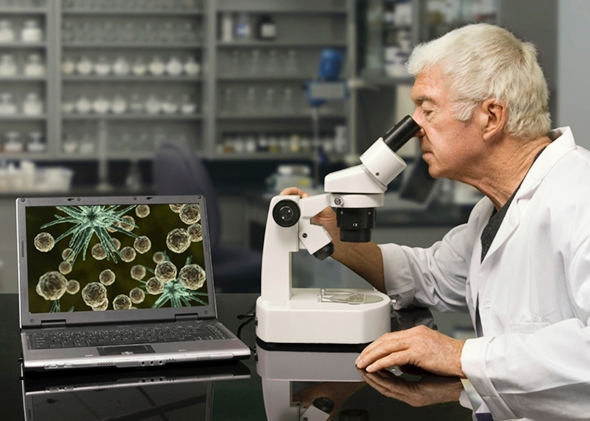
Can Technologies for Living Longer Save the Planet?
New bio- and nanotechnologies developed to smooth old age could help make their users more eco-friendly.

If longevity technologies like personalized drugs, tissue engineering and gene therapy radically extend human life expectancy, as many scientists believe, what will happen to the environment? Will population spiral out of control? It’s worth considering these questions before such technologies become mainstream.
Back in 1968, Stanford professor Paul Ehrlich sparked panic when his bestselling book, The Population Bomb, argued that humans were about to tragically overpopulate the earth, making resources so scarce that people would literally starve. “In the 1970s the world will undergo famines – hundreds of millions of people are going to starve to death in spite of any crash programs embarked upon now,” he wrote. He was wrong, and instead the opposite problem occurred. A surplus of food at cheap prices has led to an obesity epidemic in many parts of the world, all while the global population has been growing.
But even if Ehrlich couldn’t foresee how humanity would innovate to create ways to produce food more efficiently and cheaply (the price of wheat has been steadily declining from the year 1800 on), it is still the case that more humans means the earth must contend with more garbage and pollution. If population continues to grow, maybe longer life expectancies will make the situation worse?
A pair of researchers at the University of Chicago looked at this question and, using standard methods of projecting population growth, found that if the entire population of Sweden was to become immortal, population growth in that country would only be 22 percent over 100 years. That’s much less growth than might be expected, due to the fact that heavy population growth is driven by more births, not fewer deaths. Births are exponential – a couple can have one, two, three, or…. even 19 kids if they are like the Duggars. But when one person doesn’t die, that’s only one person remaining on the earth. Add to this that scholars are now starting to worry about population shrinkage, and things don’t look nearly as bad as one might have assumed.
World population growth rates are currently in decline — more than half the world’s population is reproducing at below the replacement rate. This has led some authors, such as Jeff Wise writing in Slate, to argue that because of population decline “in the long term—on the order of centuries—we could be looking at the literal extinction of humanity.” It seems doubtful that low birth rates will wipe out all of humanity, but it is true that fewer people means fewer ideas. From that perspective, population growth is actually a good thing because brainpower is how humanity has always solved its most pressing problems.
It’s difficult to predict what will happen to population numbers over the long term, since that requires predicting fertility rates. If health extension is successful, and at the same time a woman’s reproductive years can be radically extended (a real possibility), then perhaps birth rates would get a boost. But even if population does wind up growing as death rates decline, the same types of advancing technologies (biotech, nanotech etc.) that make it possible to live longer, will also make it possible to take better care of the environment. There are multiple examples already.
Waste-to-fuel programs, synthetic biology that uses algae to turn biomass into fuel and nanotechnologies that make solar power more useable are a good start. Water is a resource that states like California desperately need, and in the future, perhaps state officials will be using technologies like Dean Kamen’s Slingshot, which makes any kind of dirty water drinkable. “We can take any bad water and turn it into pure water…with the amount of electricity that runs half of a hand-held hair dryer,” Kamen says.
No matter which way the population scale tips, new technologies are poised to make the earth cleaner. As Peter Diamandis and Steven Kotler write in their book Abundance, “for the first time in history, our capabilities have begun to catch up to our ambitions. Humanity is now entering a period of radical transformation in which technology has the potential to significantly raise the basic standards of living for every man, woman, and child on the planet.” And when it comes to ambitions and desires, there may be an even greater imperative to keep the earth clean and healthy once people realize they will be living on it for a longer period of time.
Carl Safina, an environmentalist and co-founder of the Blue Ocean Institute, summarized things well when he said: “conservation is not a trade-off between the economy and the environment. It is a trade-off between the short and long term.” Once people notice that their long term is even longer, perhaps they will pay even more attention to keeping the earth green.